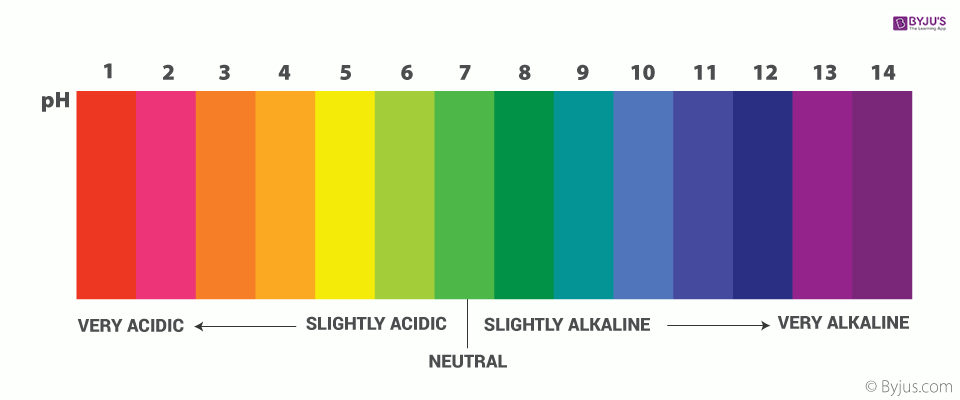Acids, Bases, and the pH Scale: Pillars of Chemical and Biological Order
The concepts of acids, bases, and the pH scale form a foundational triad in chemistry, providing the intellectual framework to understand processes ranging from industrial catalysis to the delicate balance of life itself. While early theories provided a working knowledge, the evolution of these concepts into more sophisticated models has unlocked a deeper comprehension of chemical reactivity and equilibrium. This progression, coupled with the practical utility of the pH scale, reveals a system of elegant principles that govern the functionality of the natural and engineered world. The journey from Arrhenius’s water-dependent definitions to the all-encompassing Lewis theory illustrates a powerful expansion of scientific thought, while the tangible impacts of pH are evident in fields as diverse as environmental science, human physiology, and materials science.
The Theoretical Evolution: From Protons to Electron Pairs
The scientific narrative of acids and bases is one of increasing generalization, moving from a limited, practical definition to a broadly applicable electronic theory. The first modern attempt, by Svante Arrhenius in the 1880s, defined acids as substances that release hydrogen ions (H⁺) in water, and bases as those that release hydroxide ions (OH⁻). [1][2] This theory was revolutionary, successfully explaining the neutralization reaction where an acid and base combine to form water and a salt. [2] However, its reliance on water as the solvent was a significant limitation, as it failed to account for acid-base behavior in non-aqueous systems or for substances like ammonia (NH₃) that act as bases without containing hydroxide. [2] A more comprehensive model was independently proposed in 1923 by Johannes Brønsted and Thomas Lowry, which defined acids as proton (H⁺) donors and bases as proton acceptors. [3][4] This proton-transfer model liberated acid-base chemistry from aqueous confines and introduced the critical concept of conjugate acid-base pairs, where an acid, upon donating a proton, becomes a conjugate base, and vice-versa. [5] Yet, even this broader theory could not explain reactions where no protons were exchanged. The most encompassing definition came from Gilbert N. Lewis, also in 1923, who focused on electron pairs. A Lewis acid is an electron-pair acceptor, while a Lewis base is an electron-pair donor. [6][7] This theory includes all Arrhenius and Brønsted-Lowry acids and bases and extends to reactions like the interaction between boron trifluoride (BF₃), a Lewis acid with an empty orbital, and ammonia (NH₃), a Lewis base with a lone pair of electrons. [6][8] This final step in theoretical evolution provides a universal lens for viewing a vast array of chemical interactions, classifying most organic reactions as interactions between electron-rich Lewis bases (nucleophiles) and electron-poor Lewis acids (electrophiles). [7][9]
Biological and Environmental Homeostasis: The Critical Role of pH Buffers
The precise regulation of pH is a non-negotiable requirement for life and environmental stability, a task managed by buffer solutions. A buffer is an aqueous system, typically composed of a weak acid and its conjugate base or a weak base and its conjugate acid, that resists drastic changes in pH upon the addition of acidic or basic substances. [10][11] This capability is paramount in biological systems, where nearly all enzymatic processes are highly pH-dependent; even minor deviations can lead to metabolic catastrophe. [12][13] The most vital example in human physiology is the bicarbonate buffer system in the blood, which maintains a pH between 7.35 and 7.45. [10][14] Carbonic acid (H₂CO₃) acts as the weak acid and bicarbonate ion (HCO₃⁻) as its conjugate base. [14] When acidic metabolic byproducts like lactic acid enter the bloodstream, the bicarbonate ions neutralize them; conversely, the respiratory system can modulate carbonic acid levels by controlling the exhalation of CO₂, preventing alkalosis. [10][14] This intricate interplay between chemical buffers and physiological systems like respiration and renal function demonstrates a multi-layered defense against pH fluctuations. [15] The environment relies on similar buffering mechanisms. Natural water bodies possess a buffering capacity that helps neutralize acidic inputs, protecting aquatic life. [16] However, this capacity is finite. Acid rain, caused by atmospheric sulfur dioxide and nitrogen oxides from industrial emissions, can overwhelm these natural buffers, leading to the acidification of lakes and streams. [17][18] This lowers the pH, releasing toxic aluminum ions from the soil and making the water uninhabitable for many species, from fish whose eggs cannot hatch to plants whose nutrient absorption is inhibited. [17][19]
Industrial Applications and Chemical Extremes
Control and manipulation of pH are cornerstones of modern industry, influencing product quality, safety, and process efficiency across numerous sectors. [20][21] In the food and beverage industry, pH is meticulously monitored to control fermentation in products like cheese and wine, and to prevent the growth of spoilage microorganisms, thereby ensuring safety and extending shelf life. [22][23] Water treatment facilities depend on pH adjustment for the effective removal of contaminants and to control the corrosiveness of water, protecting vast infrastructure networks from degradation. [20][22] Similarly, the pharmaceutical industry relies on precise pH control to ensure the stability, solubility, and efficacy of medications. [20][23] Beyond these conventional applications lies the realm of superacids and superbases—substances of extreme chemical potency. A superacid is a medium with an acidity greater than that of 100% pure sulfuric acid, while a superbase has a higher proton affinity than the hydroxide ion. [24][25] These are often mixtures, such as “Magic Acid” (a combination of a powerful Lewis acid like antimony pentafluoride, SbF₅, and a strong Brønsted acid like fluorosulfonic acid, HSO₃F), which is so potent it can protonate even hydrocarbons—a feat unimaginable with conventional acids. [26] Superacids have been instrumental in stabilizing highly reactive carbocations for study and are used as powerful catalysts in the petroleum industry for reactions like alkane isomerization. [25][26] Superbases, such as lithium diisopropylamide (LDA) or combinations of metal hydrides, are essential reagents in organic synthesis, capable of deprotonating extremely weak acids to form useful intermediates. [25][27] The study of these extreme materials continues to push the boundaries of chemical reactivity and synthesis.



